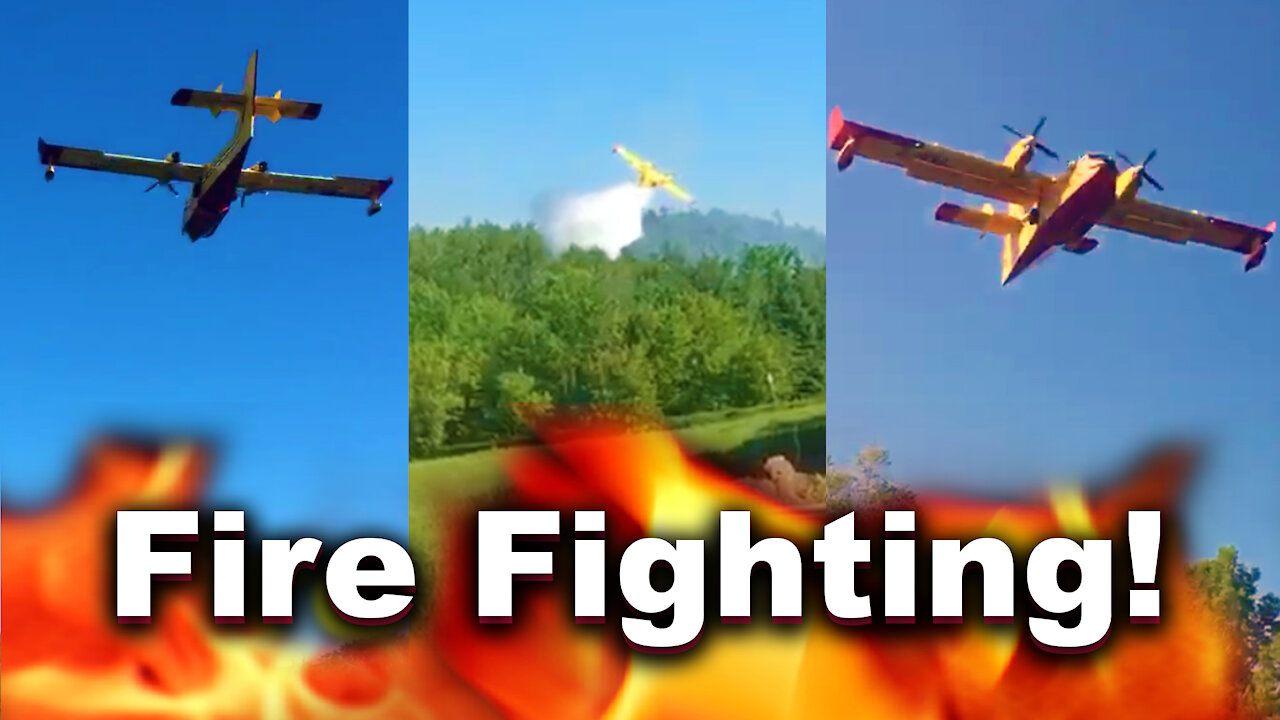Premium Only Content

Firefighting planes unleash their life-saving loads
Walking through the fields of Val des Monts in Quebec, Canada, we hear the sound of an unusually low and slow-moving airplane. Seconds later, we’re pleasantly caught by surprise as the first of a series of fat-winged planes, laden with water, zoom low and fast overhead and release their loads right at the edge of the forest.
It looked so exciting, and watching these daring pilots made me wonder what kind of a career it would be fighting fires from the air.
I found out there is a high demand for “aerial flame suppression” pilots. In fact, many places are having a lot of trouble filling positions, due to retirements and an increase in airlines hiring-away the already-small pool of potential aviation firefighters.
It turns out that helicopters make up most of these aerial fleets, though firefighting is typically just one of a helicopters' multipurpose roles, and many types of aircraft are used as well, ranging from single-engine air tankers - often adapted from crop-dusters, to larger tankers (more than 3,000-gallon capacity). Even jet transports have been repurposed for dropping massive firefighting loads.
The firefighting pilots come from various backgrounds and experience, including commercial and military flying. These brave pilots have to rely on old-fashioned natural ability and flying expertise since there is no automation to help them out.
The average Forest Service pilot earns around $100K per year. Many pilots work as private contractors, or freelancers, and are paid by flight time, so their income can fluctuate. Some of them can earn hundreds of thousands of dollars in a busy season, and demand seems to be on the rise. Seasonal contracts are popular as well among these firefighters, who can enjoy long periods of “off-time” during the winter.
-
 0:04
0:04
AmplifiedLIFE
1 year ago $0.03 earned“Peep”-ing & Chirping Cardinal
115 -
 3:43
3:43
Dinesh D'Souza
3 years agoSTUNNING: TX Dem Legislators Prove Their Own Hypocrisy About Wearing Masks on Planes
11.8K172 -
 1:57
1:57
HobbyMarketing
3 years agoPlanes flying overhead
144 -
 2:05
2:05
WKBW
4 years agoShe is helping people unleash their creativity and find their muse at MUSEjar
8 -
 1:48
1:48
WGBA
3 years agoEAA Hospital Planes PKG
17 -
 1:50:19
1:50:19
Chicks On The Right
4 hours agoBoulder attack, Miller torches CNN, Elon vs Cory, Biden's speech, Greenwald gets conservative cover
14.7K3 -
 1:20:38
1:20:38
JULIE GREEN MINISTRIES
3 hours agoLIVE WITH JULIE
100K189 -
 20:31
20:31
The Rad Factory
15 hours ago $0.23 earnedCan You Daily Drive an F1 Car?
3.95K2 -
 15:51
15:51
Nicholas Bowling
20 hours ago $0.20 earnedDemon Screams “I’m Gonna Kill Her” | UI Recap
4.03K2 -
 49:24
49:24
TheGetCanceledPodcast
14 hours agoThe GCP Ep.12 | Igor Aleksov Talks Indie Films, Lena & Vladimir, Big Festivals & Award Shows
3.1K